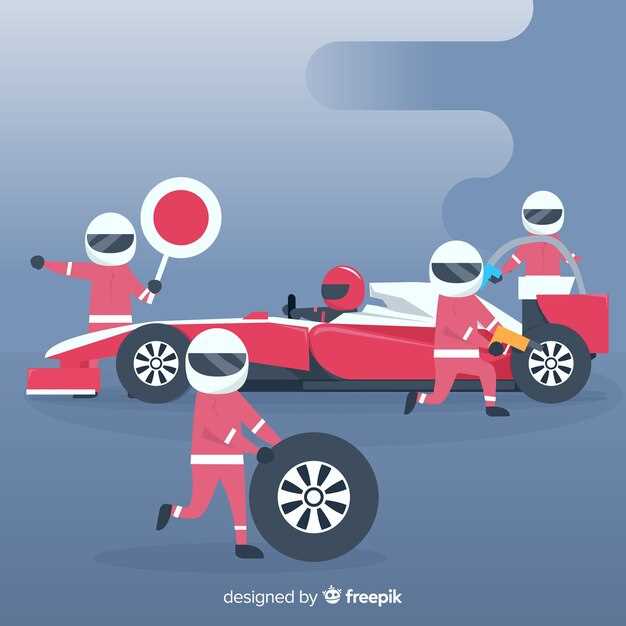
Choosing the right starter car is crucial for anyone looking to embark on a career in racing. The first vehicle you drive in competitive racing not only shapes your skills but also impacts your overall experience on the track. As such, selecting a car that balances performance, affordability, and ease of handling sets the foundation for your future success.
In this article, we will explore some of the best starter cars suited for aspiring racers. These vehicles are designed to help you grasp the fundamentals of racing while also providing the thrill and excitement needed to fuel your passion. From nimble hatchbacks to spirited sedans, there are various options available that pique the interest of novice racers.
Whether you are aiming to participate in amateur leagues or simply want to enhance your driving skills, the right car can make all the difference. Join us as we dive into our top picks that can serve as the perfect launchpad for your racing career.
Choosing the Right Starter Car for Beginners
When entering the world of motorsports, selecting the appropriate starter car is crucial for aspiring racers. The right vehicle can significantly influence your development and enjoyment while honing your skills on the track.
First and foremost, consider the type of racing you want to pursue. Different motorsport disciplines, such as circuit racing, rally, or karting, often have specific requirements and preferred vehicles. Researching the popular cars in your chosen category will help you understand which models are suited for beginners and widely accepted in competitions.
Another key factor to assess is the car’s performance characteristics. As a beginner, it is advisable to choose a model that offers a balanced combination of speed, handling, and safety. Vehicles with a lower power-to-weight ratio allow for better control, giving novice drivers the opportunity to build confidence without overwhelming themselves.
Reliability is equally important when selecting a starter car. Choose a make and model known for durability, as frequent breakdowns can hinder your learning process. Look for user reviews and feedback from fellow motorsport enthusiasts to gauge the reliability of potential starter cars.
Additionally, consider the ease of maintenance. A car that is simple to service and repair not only saves time and money but also allows you to gain valuable mechanical knowledge. Understanding your vehicle’s workings is beneficial, especially if you plan to race more seriously in the future.
Finally, assess your budget. Starter cars can vary widely in price, so set a realistic budget that includes not just the purchase of the car but also the cost of insurance, fuel, maintenance, and any modifications required for racing. Investing wisely from the outset can shape your racing journey positively.
In summary, when choosing the right starter car for your motorsports career, focus on the type of racing you wish to participate in, prioritize performance and reliability, ensure ease of maintenance, and keep your budget in mind. Making an informed decision now will pave the way for a successful and enjoyable racing experience.
Key Features to Look for in a Racing Car
When embarking on a journey in motorsports, selecting the right car is crucial for your success. A racing car differs significantly from a standard vehicle, incorporating various features that enhance performance, handling, and safety. Here are some essential elements to consider when choosing a racing car.
| Feature | Description |
|---|---|
| Weight | Lightweight cars provide better acceleration and handling. Look for materials like carbon fiber and aluminum that reduce weight without sacrificing strength. |
| Engine Performance | An effective racing car should have a powerful engine with optimal horsepower and torque. Consider turbocharging options and engine displacement for better performance. |
| Suspension System | A high-quality suspension system allows for precise handling and stability during high-speed maneuvers. Adjustable suspension enhances customization for different tracks. |
| Braking System | Advanced braking systems, such as carbon-carbon brakes, provide better stopping power and heat resistance. Reliable brakes are crucial in competitive racing environments. |
| Safety Features | Look for cars equipped with safety enhancements like a roll cage, harnesses, and fire suppression systems. These features protect drivers during high-intensity races. |
| Tires | The right tires impact traction and control. Choose racing-specific tires optimized for different weather conditions and track types. |
Selecting a car that incorporates these key features will provide a solid foundation as you begin your racing career. Prioritize performance, safety, and handling to ensure your success in the competitive world of motorsports.
Cost Considerations for Entry-Level Racing Vehicles
When embarking on a journey in the world of motorsports, selecting the right car as a starter is crucial, but it must also fit within your budget. The cost of entry-level racing vehicles can vary significantly based on several factors.
Initial Purchase Price: The first consideration is the initial price of the car itself. Entry-level racing vehicles can range from affordable options, such as used compact cars, to more specialized models that may come with a premium price tag. Researching the current market can help identify suitable starter cars that balance performance and cost.
Maintenance and Repairs: After acquiring a racing car, ongoing maintenance needs to be factored into the overall cost. Racing vehicles often require more frequent servicing than standard road cars. It’s essential to budget for regular oil changes, tire replacements, and brake servicing. Additionally, unexpected repairs may arise, so having a financial cushion for these incidents is wise.
Upgrades and Modifications: To enhance performance, many racers choose to modify their vehicles. While upgrades can improve speed and handling, they can also add up quickly. It’s important to prioritize which modifications are essential for your racing goals and budget accordingly. Investing in upgrades strategically can yield competitive benefits without breaking the bank.
Insurance Costs: Racing insurance is another expense to consider. This coverage is often more expensive than standard vehicle insurance due to the inherent risks associated with racing. Comparing rates from various insurers can help find an affordable policy that provides adequate coverage without hindering your budget.
Event Fees: Participation in racing events can incur additional costs, including entry fees, travel expenses, and accommodations. These can add a significant amount to the overall cost of racing. Planning a racing schedule that considers these expenses is vital for novice racers looking to keep their finances in check.
In summary, careful budgeting and conscious decision-making regarding a starter car, maintenance, upgrades, insurance, and event participation are key to managing the costs associated with entry-level racing vehicles. By considering these factors, aspiring racers can set a solid foundation for a successful and enjoyable racing career.
Popular Models Recommended for Aspiring Racers

For those looking to dive into the world of motorsports, choosing the right car is crucial for starting a successful racing career. Several models stand out for their performance, affordability, and suitability for novice racers. Here’s a list of popular cars that can help kickstart your journey in racing.
-
Mazda MX-5 Miata
The MX-5 Miata is renowned for its lightweight structure and nimble handling, making it an excellent choice for beginners. Its rear-wheel drive and balanced weight distribution enhance the driving experience, providing a perfect platform for learning racing fundamentals.
-
Ford Mustang GT
This iconic American muscle car offers substantial power and performance. With a robust V8 engine, the Mustang GT allows aspiring racers to experience speed while providing enough torque for various racing conditions.
-
Volkswagen Golf GTI
The Golf GTI is a versatile hatchback that combines practicality with spirited performance. Known for its engaging handling and turbocharged engine, it serves as a great entry point for those interested in both track days and daily driving.
-
Subaru BRZ / Toyota 86
These twin models emphasize driver engagement with their rear-wheel drive layout and balanced chassis. They are lightweight, easy to control, and perfect for drifting, making them popular among aspiring racers in grassroots motorsports.
-
Honda Civic Si
With its turbocharged engine and sporty design, the Civic Si strikes an impressive balance between performance and affordability. It’s a staple in amateur racing leagues, allowing drivers to hone their skills effectively.
Choosing any of these popular models can significantly impact your learning experience in motorsports. Each car offers unique features that cater specifically to the needs of aspiring racers, enabling them to develop essential driving skills and enjoy the thrill of competition.
Maintaining Your First Racing Car for Performance

When starting your journey in motorsports, maintaining your first racing car is crucial for ensuring optimal performance on the track. A well-kept car not only performs better but also enhances safety and longevity. Here are essential maintenance tips to keep your racing starter in peak condition:
- Regular Inspections:
Frequent checks are important to identify potential issues early. Inspect key components such as brakes, tires, and suspension systems before every race.
- Engine Care:
Ensure the engine runs smoothly by following a strict maintenance schedule. This includes:
- Regular oil changes to promote efficient lubrication.
- Replacing air filters to ensure optimal airflow.
- Checking and maintaining spark plugs to improve ignition efficiency.
- Tire Maintenance:
Tires are one of the most critical components in racing. Monitor tire pressure and tread depth consistently:
- Check pressure levels before and after each race.
- Rotate or replace tires as needed to avoid uneven wear.
- Brake System:
Your car’s braking system must be top-notch for racing. Pay attention to:
- Checking brake pads regularly for wear.
- Inspecting brake fluid levels and replacing fluid according to the manufacturer’s guidelines.
- Cooling System:
A racing engine generates significant heat. Maintain the cooling system by:
- Ensuring the coolant levels are adequate and the mixture is suitable for your racing environment.
- Cleaning the radiator to prevent overheating during races.
- Suspension Setup:
Adjustments to your suspension can greatly affect handling performance. Regularly inspect components and consider:
- Replacing worn-out shocks and struts.
- Adjusting the suspension settings based on track conditions.
- Documentation:
Keep a maintenance log to track repairs and inspections. This can help you monitor changes in performance and assist in troubleshooting issues more efficiently.
By investing time and effort into maintaining your racing car, you’ll enhance its performance and reliability, paving the way for a successful motorsports career.
Transitioning from Street to Track: What to Expect
Making the leap from driving on public streets to racing on a track is an exhilarating transition that many enthusiasts aspire to undertake. In the world of motorsports, understanding the differences in driving environment is crucial for any starter.
First and foremost, the track environment is vastly different from driving on the streets. Unlike the typical road, where speed limits, traffic laws, and pedestrians dictate your pace, a racetrack offers a controlled space designed specifically for high-speed performance. Here, you will experience the limits of your car in a safe and competitive atmosphere. It is essential to adapt your driving style to focus on acceleration, braking, and cornering techniques suited to racing conditions.
Another significant difference is the level of technical skill required. While street driving often involves navigating around obstacles and adhering to safety regulations, track racing demands an understanding of race lines, apexes, and vehicle dynamics. As a starter, you will want to familiarize yourself with racing techniques, such as trail braking and throttle control, which can be critical for improving lap times.
Moreover, the importance of vehicle setup cannot be overstated. In motorsports, a well-prepared car can significantly impact your performance. This may include modifications for suspension, tires, and brakes to ensure optimal handling and speed. Understanding the basics of your vehicle’s setup and how it affects driving will help you become a better racer.
Finally, mental preparation is a key component of racing that is often overlooked. Competitive racing requires focus, quick reflexes, and the ability to remain calm under pressure. As you transition to the track, expect to encounter higher stress levels and competition, which will challenge your mental fortitude.
In conclusion, transitioning from street driving to track racing involves significant adjustments in driving style, technical knowledge, vehicle handling, and mental preparation. Embrace this exciting journey as you progress in the world of motorsports, and remember that every race offers valuable lessons on the path to becoming a skilled driver.




